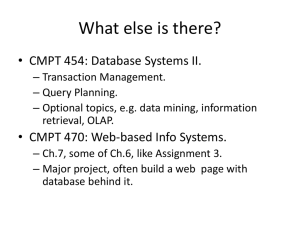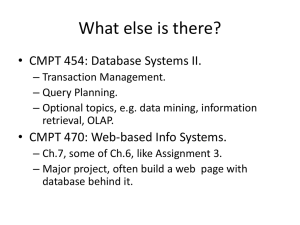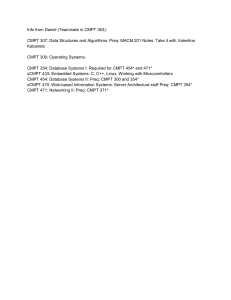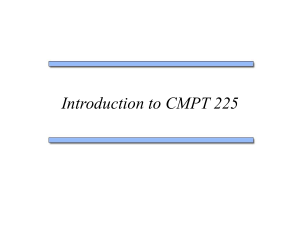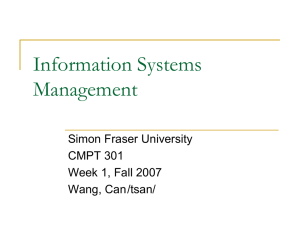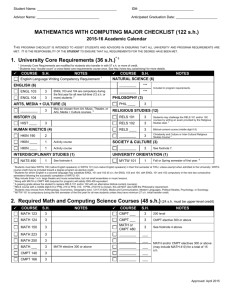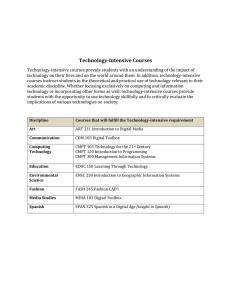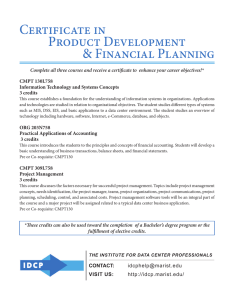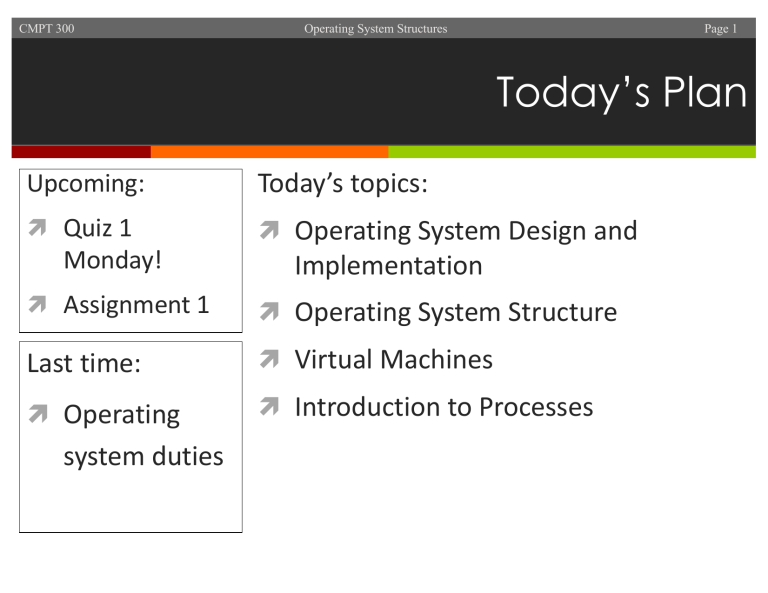
CMPT 300 Operating System Structures Page 1 Today’s Plan Upcoming: Today’s topics: ì Quiz 1 ì Operating System Design and Monday! Implementation ì Assignment 1 ì Operating System Structure Last time: ì Virtual Machines ì Operating ì Introduction to Processes system duties CMPT 300 Operating System Structures Page 2 System Programs ì System programs provide a convenient environment for program development and execution. Examples: ì File manipulation ì ì ì ì ì ì Status information File modification Programming language support Program loading and execution Communications Application programs ì Most users’ view of the operating system is defined by system programs, not the actual system calls. CMPT 300 Operating System Structures Page 3 Example: The Linker and Loader CMPT 300 Operating System Structures Page 4 Operating System Design & Implementation ì User goals – operating system should be: ì Convenient to use, easy to learn ì Reliable, safe, and fast ì System goals – operating system should be: ì Easy to design, implement, and maintain ì Flexible, reliable, error-free ì Efficient! CMPT 300 Operating System Structures Page 5 Operating System Design & Implementation ì Important principle to separate ì Policy: What will be done? ì Mechanism: How to do it? ì Why have this separation? ì Allows maximum flexibility if either policy or mechanism need to be changed later CMPT 300 Operating System Structures Page 6 Operating System Implementation ì Much variation ì Early OSes in assembly language ì Then system programming languages like Algol, PL/1 ì Now C, C++ ì Actually usually a mix of languages ì Lowest levels in assembly ì Main body in C ì Systems programs in C, C++, scripting languages like PERL, Python, shell scripts ì High-level languages easier to port to other hardware ì But slower ì Emulation can allow an OS to run on non-native hardware CMPT 300 Operating System Structures Page 7 Simple Structure ì MS-DOS – written to provide the most functionality in the least space ì Although MS-DOS has some structure, its interfaces and levels of functionality are not well separated CMPT 300 Operating System Structures Page 8 Layered Approach ì The operating system is divided into a number of layers (levels), each built on top of lower layers. The bottom layer (layer 0), is the hardware; the highest (layer N) is the user interface. ì With modularity, layers are selected such that each uses functions and services of only lower-level layers CMPT 300 Operating System Structures Page 9 UNIX ì UNIX – limited by hardware functionality, the original UNIX operating system was a monolithic kernel. ì The UNIX OS consists of two separable parts: ì Systems programs ì The kernel ì Consists of everything below the system-call interface and above the physical hardware ì Provides the file system, CPU scheduling, memory management, and other operating-system functions; a large number of functions for one level CMPT 300 Operating System Structures Page 10 Traditional UNIX Structure CMPT 300 Operating System Structures Page 11 Microkernel System Structure ì Moves as much from the kernel into “user” space ì Benefits: ì Easier to extend a microkernel ì Easier to port the OS to new architectures ì More reliable ì More secure ì Detriments: ì Performance overhead of user space to kernel space communication CMPT 300 Operating System Structures Page 12 Monolithic vs. Microkernel Structure ì Most popular modern OSes are actually hybrids of the monolithic and microkernel structures: ì Many functions are moved into “user” space ì Some are kept in the kernel for performance reasons ì E.g. Mac OS/X structure: CMPT 300 Operating System Structures Page 13 Virtual Machines ì A virtual machine takes the layered approach to its logical conclusion. It treats hardware and the operating system kernel as though they were all hardware ì A virtual machine provides an interface identical to the underlying hardware ì The operating system host creates the illusion that a process has its own processor and memory ì Each guest is provided with a (virtual) copy of underlying computer CMPT 300 Operating System Structures Page 14 Virtual Machines Non-virtual Machine Virtual Machine (a) Nonvirtual machine (b) virtual machine CMPT 300 Operating System Structures Page 15 VMWare Architecture CMPT 300 Operating System Structures Page 16 Java Virtual Machine CMPT 300 Operating System Structures Page 17 Operating-System Debugging ì Debugging is finding and fixing errors, or bugs ì OSes generate log files containing error information ì Failure of an application can generate core dump file capturing memory of the process ì Operating system failure can generate crash dump file containing kernel memory ì Kernighan’s Law: “Debugging is twice as hard as writing the code in the first place. Therefore, if you write the code as cleverly as possible, you are, by definition, not smart enough to debug it.”
